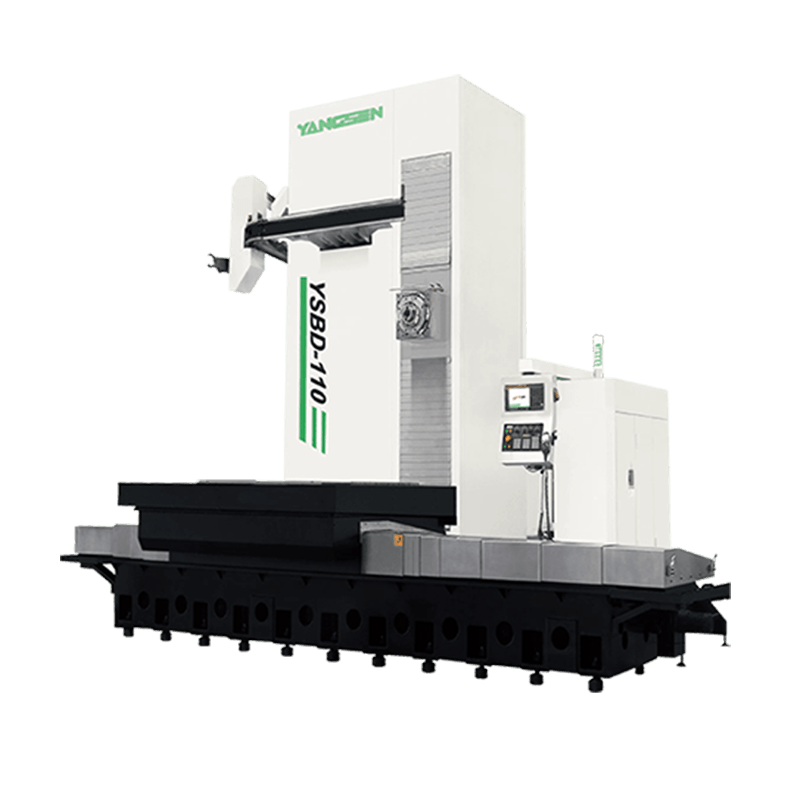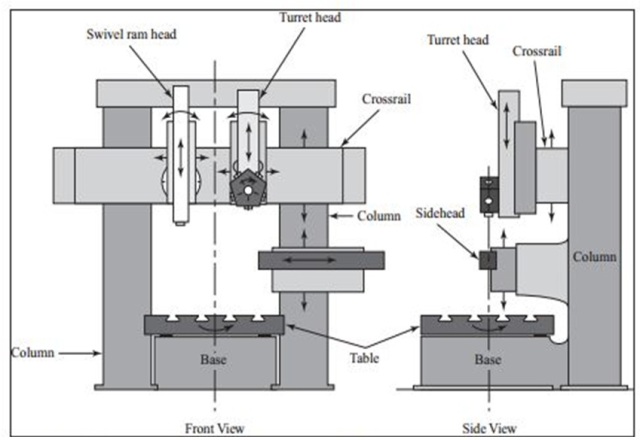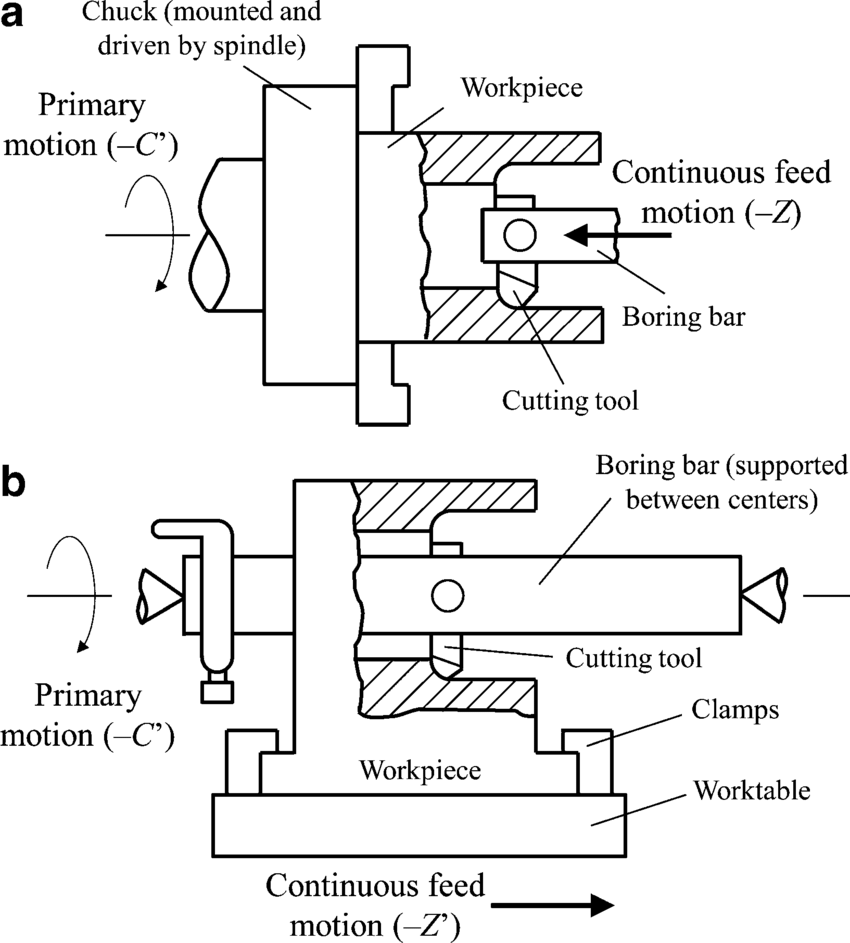Hey there! Ever wondered about the world of boring technology? It's not just about making holes; it's an art and a science. Choosing the right boring method isn't just a technical decision – it's crucial for the success of your project.
Boring technology is an essential part of many construction and manufacturing processes. It's a method to create precise holes in various materials, from metal to earth. As someone involved in these industries, you know how crucial it is to choose the right boring method for your project. It can significantly affect efficiency, cost, and overall success.
We will dive deep into the two primary boring methods: horizontal and vertical. We'll explore how each method works, their advantages and disadvantages, and the applications they're best suited for.
Our journey will start with a closer look at the mechanics behind boring technology. Then, we'll compare horizontal and vertical boring, discussing factors like precision, equipment requirements, and environmental impact.
By the end of this guide, you'll clearly understand which method is best for your specific needs.
Let's begin our exploration into the world of boring technology!
There are two basic types of drilling, horizontal and vertical. We will try to understand the basic definition of both and try to understand the basics in this section.
Think of horizontal boring as your underground navigator. It's like quietly tunneling beneath a city without causing a stir above ground. This method involves a machine that chews through soil or rock, creating a pathway underneath.
It's useful for laying pipes, cables, or anything else that needs a secret route below the surface. Horizontal boring is your go-to technique when the goal is to avoid disturbing the surface, like keeping a beautiful landscape intact.
Vertical boring, on the other hand, is the deep diver of boring methods. Imagine it as drilling straight down into the secrets of the earth.
This technique is about that downward motion, perfect for reaching the depths for water wells, oil, or even geological exploration.
It is like having a direct line to the planet's heart, offering precision and depth.
Horizontal boring is your strategic option and is perfect for navigating under obstacles or in sensitive areas. It's the method you choose when the surface needs to stay untouched. Vertical boring is your depth champion; all about getting to the deepest points beneath our feet. It's the choice for jobs that require deep, precise access to underground layers.
Deciding between horizontal and vertical boring comes down to the project's specific demands. Are we looking to thread a path under the earth or reach its deep secrets? Each method shines in its own way.
These basics are like having the right key for every lock – it helps us make the smart choice for every unique challenge.
Next, let's dive into the advantages and challenges of each method. It's time to see what makes each of these boring methods stand out!
Both techniques are essential in various manufacturing and construction applications but possess distinct characteristics and operational differences.
When you look at a horizontal boring machine, think of it as a subterranean navigator. It's like a mole with a GPS, burrowing precisely where we need it.
The machine uses a rotating drill bit, pushed forward into the ground. It's all about control and direction – like playing a video game, but underground.
We can steer it around obstacles, under rivers, or beneath buildings, making it perfect for urban environments where disruption is a no-go.

Vertical boring machines, in contrast, are like powerful earth punches. They drill straight down, using a combination of spinning and hammering actions. Imagine a jackhammer, but super-sized and way more precise.
This machine is designed to penetrate deep into the earth, breaking through layers of rock and sediment. It's the heavy lifter of the boring world, perfect for when we need to reach the depths.

In the precision department, horizontal boring is a real star. It's like a master archer hitting the bullseye under the ground. We can easily control its path, making it ideal for complex, obstacle-riddled routes.
Vertical boring is more about brute strength, but don't be fooled – it's also precise. It's like dropping a plumb line straight to the core, perfect for exact verticality.
When it comes to speed, vertical boring takes the cake. It's like a race car, zooming straight down into the earth. It's fast because it's not dodging obstacles – it's plowing through them.
Horizontal boring is like a rally car navigating a trickier, winding course. It might not win a straight race, but its ability to maneuver quickly through complex routes is unmatched.
In this world of boring, it's not just about making holes – it's about making the right hole in the right way. We may weave under a cityscape with horizontal boring or drill deep with vertical machines; it's all about matching our tools to our goals. Precision, accuracy, speed, and efficiency are the words we live by in the boring business.
Let's start with horizontal boring. Picture utility companies – they're big fans of this method. Why? Because it's perfect for laying pipes and cables without tearing up streets or landscapes. It's like doing surgery on the city without leaving a scar.
Horizontal boring also has a special place in environmental projects. Think of creating pathways under rivers or protected areas where you can't dig a trench. It's the go-to technique when the surface needs to stay pristine.
Now, let's switch gears to vertical boring. This method is a superstar in the world of mining and oil extraction. It’s like the main artery for these industries, getting right down to where the resources are.
Geotechnical engineers also love vertical boring. They use it to study soil and rock layers, like taking a biopsy of the earth. And let's not forget construction, where vertical boring lays the foundation for skyscrapers. It's the groundwork for towering achievements.
It is all about the end game. Ask yourself, "What's the goal here?" If you want to install or inspect something under a sensitive area, horizontal boring is your friend. It's about being a ninja, doing the job without being noticed.
Conversely, if your project is all about depth – reaching down to hidden resources or building a solid foundation – then vertical boring is the way to go. It's your deep-sea diver plunging into the depths for treasure.
Choosing the right boring method is like picking the right tool from a toolbox. You wouldn't use a hammer to screw in a bolt, right? The same logic applies here. Match the method to your mission, and you’re on the path to success.
When discussing the initial cash outlay, horizontal boring machines often carry a heavier price tag. It is like choosing between a high-end sports car and a sturdy SUV. With its precision tech and complex guidance systems, the horizontal borer is like that sports car – sleek and a bit pricey.
Conversely, vertical boring machines are more like the SUV – robust, no-nonsense, and generally more budget-friendly. They may not have all the bells and whistles of their horizontal counterparts, but they get the job done.
Running and maintaining these machines is like keeping your vehicle in top shape. Horizontal boring machines can be a bit high-maintenance. They need regular check-ups and tweaks to ensure they're on the right path.
Vertical boring machines, though, are the workhorses. They're built for toughness, but that doesn't mean they're cheap to operate. The deeper you go, the more energy and wear-and-tear costs you rack up.
Let's talk about return on investment (ROI). Most people ask us to tell them this because they also invest in these machines. It is also a good opportunity as it saves time and provides peace of mind.
Horizontal boring might seem like a big spend upfront, but it can be a cost-saver in the long run. Think about it – less surface disruption means fewer repairs and lower restoration costs. It's like investing in a good insurance plan.
Vertical boring, while cheaper at the outset, can sometimes surprise you with its long-term costs, especially in challenging environments. However, the returns can be significant when it hits the jackpot – like tapping into a rich mineral vein.
It is not just about the upfront costs; it's about considering the whole life cycle of the project. Weigh the initial investment against the potential earnings. It's like playing the stock market – you’ve got to think long-term.

Horizontal boring has been riding the tech wave with some cool upgrades. Imagine boring machines getting a GPS upgrade – that's exactly what's happening. New guidance systems are making these machines smarter, more accurate, and easier to control.
It's like giving them an internal compass, ensuring they don't lose their way underground. Plus, we're seeing more eco-friendly models hitting the scene, reducing environmental footprints while still getting the job done.
Vertical boring isn't left behind in this tech race. These machines are bulking up with stronger drill bits and faster rotation speeds. Think of them as going from regular gym-goers to professional weightlifters. They're drilling deeper and faster than ever before.
And the best part?
They're becoming more energy-efficient, meaning we can reach greater depths without burning a hole in our pockets or the ozone layer.
Technological advancements in boring aren't just cool gadgets – they're game-changers. With smarter machines, we see jobs completed faster and with fewer errors.
It's like having a seasoned pro in your team who gets it right the first time. This speed and precision translate to cost savings in terms of time and resources.
And let's not forget the environmental angle. With greener machines, we're cutting down on emissions and energy use. This is huge, not just for our planet but also for project budgets. Lower energy consumption means lower bills, and who doesn't love that?
Just like any other industrial equipment or operating technique, there are certain challenges that you may face in both boring methods. These challenges have their solutions sorted out by our expert engineers; you need not worry about that!
Let’s learn more!
In the boring world, horizontal and vertical methods face their own set of hurdles. For horizontal boring, one major challenge is dealing with unexpected underground obstacles. Imagine navigating a maze but can't see the walls – that's what it's like. For vertical boring, the challenge often lies in tackling different ground layers. It's like trying to drill through a cake with multiple layers, each with its hardness and surprises.
The key to overcoming these challenges? Smart planning and cutting-edge technology. For horizontal boring, using advanced ground-penetrating radar helps us 'see' underground, avoiding those surprise encounters.
It's like giving the boring machine x-ray vision. Adopting multi-strength drill bits in vertical boring can ease the journey through varied ground layers. Think of it as having an adjustable wrench instead of a one-size-fits-all.
Regular operator training and investing in routine maintenance also go a long way. It ensures our machines and teams are always in top form, ready to tackle whatever lies beneath.
So, what have we dug up in this guide? We've explored the ins and outs of horizontal and vertical boring, each with unique strengths and quirks. Horizontal boring is your stealthy pathfinder, great for navigating under obstacles with minimal surface disturbance. Vertical boring, on the other hand, is your powerhouse, drilling down to the depths with precision.
Choosing between the two? It's all about understanding your project's needs and the ground you're working with. And remember, with the latest tech and smart strategies, even the toughest challenges can be drilled through.
Keep exploring, keep learning. The boring world constantly evolves, and there's always more to uncover!Hey there! Ever wondered about the world of boring technology? It's not just about making holes; it's an art and a science. Choosing the right boring method isn't just a technical decision – it's crucial for the success of your project.